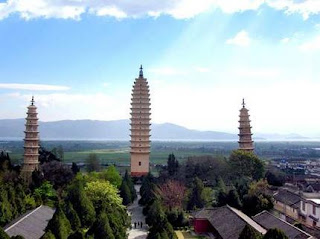I am confusion about love .
Some say, love like water, "tender and bright; Others say, love is like wine, it gets better as it grows old; And others say, love is like the wind, and no zong...
I say, love is like a pair of chopsticks.
Man is a root chopsticks, is a woman "root chopsticks, two root chopsticks grip together, become chance. It's love a pair of chopsticks.
A pair of chopsticks, the heart thinks toward one place, force makes toward one place, can the beautiful day clip ", send into us up the mouth. Men and women, which are no less a root chopsticks, can dip in a little marinades, always can't capture the real life taste.
A pair of chopsticks, must have a fulcrum. Westerners difficult to learn how to use chopsticks, why? He is hard to find two root chopsticks balance. Want to let two root irrelevant chopsticks firmly clamped food, one of the root should put a low profile for another root chopsticks, a powerful fulcrum. Finger strength as a small skills. Yes, love often also need a little skill, but the heart of coordination tacit understanding is fundamental, is the first true .
Since chopsticks role always need both parties to come together to finish, why not design a root conjoined twins chopsticks? That's not chopsticks, but clip. Well, clamps can also pick up something, but, clip not bigger, zhang clip the capacity of a limited. The chopsticks is free, it can lion big mouth, all good things the panoramic bag. This is the power of love. So, don't forget, a pair of chopsticks, should be parallel, to another root chopsticks enough free space, the space is larger, the greater the harvest, as long as another root chopsticks or you this one of a pair of chopsticks roots.
Love is like a pair of chopsticks, rather than the scissors. Scissors too sharp, always tore lousy destruction, scissors, hearts no warmth and love need construction, we need to caress; Love like a pair of chopsticks ", rather than LaoHuQian. LaoHuQian is not the strength, however, it is too strong manipulative, love need tender, need thoughtful.
Chopsticks have very many kinds, has made of bamboo, also have made of wood; There are plastic, also have made of ivory; Besides the gold and silver. People too. People do not have the distinction between high, but the cultural differences and habits are also different. A root chopsticks too long, a root chopsticks too short, no; A root chopsticks is too thick, a root chopsticks is too thin, also not line. See how a root chopsticks, may help you in the boundless huge crowd, to find their own half.
Have a kind of chopsticks, called Neil, the chopsticks, simple, rough, use namely abandon, to be a one-off. Disposable chopsticks, has nothing to do with love. This is same, and love with one-night stand guiltless.
Love is like a pair of chopsticks, the most fundamental point is that one cannot who between them, in order to life, always buchibuqi; They always together enjoy life, to share the bitter and the sweet in the life the ups and downs. That's just what the common features of the good love?























































